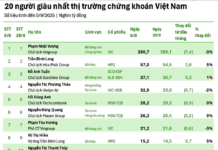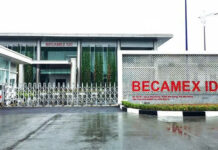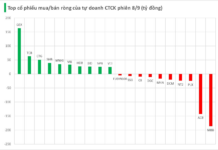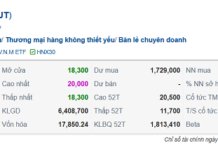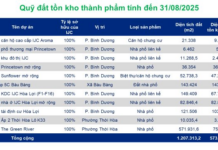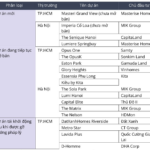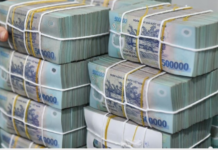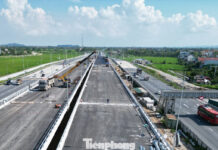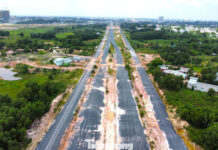
Navigating Through the Hustle and Bustle: Insider Tips for Managing Vietnam’s Incredible Traffic
The graphic-rich statistical website, Seasia Stats, has unveiled a captivating visualization titled “Asia’s Top 15 Economies in 2025.” Based on data from the International Monetary Fund (IMF), the graphic paints a picture of Asia’s continued economic ascent.
According to this insightful list,
China takes the lead with an astonishing economy size surpassing $19.5 trillion
. Japan follows in second place, albeit at a significant distance, with an economy valued at $4.4 trillion. India secures the third spot with a close $4.3 trillion.

Unveiling Asia’s economic powerhouses: The top 15 economies in 2025. Graphic: Seasia Stats.
South Korea and Indonesia hold their ground in fourth and fifth place, respectively, with economy sizes of $1.9 trillion and $1.5 trillion. Notably,
Indonesia stands as the largest economy in Southeast Asia
, fueled by its abundant natural resources and a burgeoning middle class.
In sixth place, we find Saudi Arabia with an economy valued at $1.1 trillion, followed by Taiwan ($814 billion) and the UAE, projected to reach $569 billion.
The next five spots are claimed by Southeast Asian nations, with Singapore, Thailand, the Philippines, and Vietnam in close contention. Singapore, ranked ninth in Asia and second in Southeast Asia, boasts an economy worth $562 billion, while Thailand follows closely with $545 billion.

Indonesia: The economic powerhouse of Southeast Asia.
The Philippines and Vietnam are neck and neck, occupying the 11th and 12th positions, with projected economy sizes of $508 billion and $506 billion, respectively.
Vietnam’s rapid economic expansion is attributed to its booming manufacturing sector and foreign investment, while the Philippines leverages its youthful workforce and burgeoning service sector.
Malaysia secures the 13th spot with an economy valued at $488 billion, driven by its electronics and palm oil industries.
Rounding out the graphic are Bangladesh and Iran, occupying the 14th and 15th positions, with economy sizes of $482 billion and $464 billion, respectively.
Vietnam Aims for Approximately 8% GDP Growth in 2025
In early December, Prime Minister Pham Minh Chinh announced that Vietnam is on track to meet or exceed all 15 key targets, particularly growth objectives. The country’s economy is estimated to grow by over 7% in 2024,
placing it among a select few nations with high growth rates in the region and globally.
Vietnam’s macroeconomic stability remains robust, with inflation controlled below 4% and healthy surpluses in key areas. Notably, rice exports have thrived, with an estimated volume of over 8.5 million tons and a value of over $5.3 billion in the first 11 months of the year, reflecting a 10.6% and 22.4% increase, respectively, compared to the same period last year. The nation’s brand value has also soared, reaching $507 billion in 2024 and ranking 32nd out of 193 countries, a climb of one position from 2023.

According to the IMF, Vietnam’s economy is projected to reach $506 billion.
As of November, total import and export turnover is estimated at approximately $715 billion, a 15.3% increase, with a trade surplus of over $23 billion. The entire year’s turnover is projected to reach $807.7 billion, an all-time high. Government revenue is also expected to exceed the target by over 10%, while public debt, government debt, and foreign debt remain well-controlled and below the permitted limits.
Highlighting key targets, including a GDP growth rate of approximately 6.5-7%, the Prime Minister emphasized the need to prioritize growth and strive for an ambitious 8% GDP growth rate to propel Vietnam forward in its 2026 plans and the broader 2021-2030 strategy.
Speaking to TTXVN, Mr. Luong Van Khoi, Deputy Director of the Central Institute for Economic Management (CIEM), expressed confidence in Vietnam’s ability to achieve the 8% GDP growth target.
Mr. Khoi attributed this optimism to several factors, including the continued growth of exports facilitated by an extensive network of free trade agreements (FTAs), especially the newer generation of FTAs. While the new term of US President Donald Trump may bring about policies that impact Vietnam, it also presents opportunities to attract investment flows shifting from other regional countries. The government is also actively attracting high-quality FDI into new industries, such as semiconductors and artificial intelligence (AI).
He further emphasized the role of digital transformation and AI as significant growth drivers. The upcoming decree on AI, coupled with Decree 52 on digital transformation, will provide a favorable legal framework for the application of 4.0 technology, boosting economic growth.
“Building on this foundation, we need to invest more vigorously in high-tech and organic agriculture,” Mr. Khoi added. “Private investment is expected to continue its strong growth trajectory next year.” He also noted that public investment in infrastructure, particularly large-scale projects like the North-South railway and nuclear power plants, will create new growth momentum.
“The Avison Young CEO on 2024: A ‘Year of Change’ and the Real Estate Market’s Readiness for a New Cycle”
David Jackson, Managing Director of Avison Young Vietnam, emphasizes that the significant changes in 2024 regarding policies, investment trends, and the business landscape form the basis for maintaining an optimistic outlook for the Vietnamese real estate market in this new growth cycle.
The Capital City’s Multi-Million Dollar Makeover: Hanoi Approves Urban Plan Featuring a $420 Million Horse Racing Track
The Soc Son Urban Subdivision Area 3 (Hanoi) plan encompasses approximately 1,424 hectares, with an expected population of 46,000 by 2030. This area is designated for urban development, featuring a diverse range of functions, including a public park, schools, hospitals, high-quality residential areas, and a $420 million horse racing track, promising a vibrant and dynamic future for the region.












